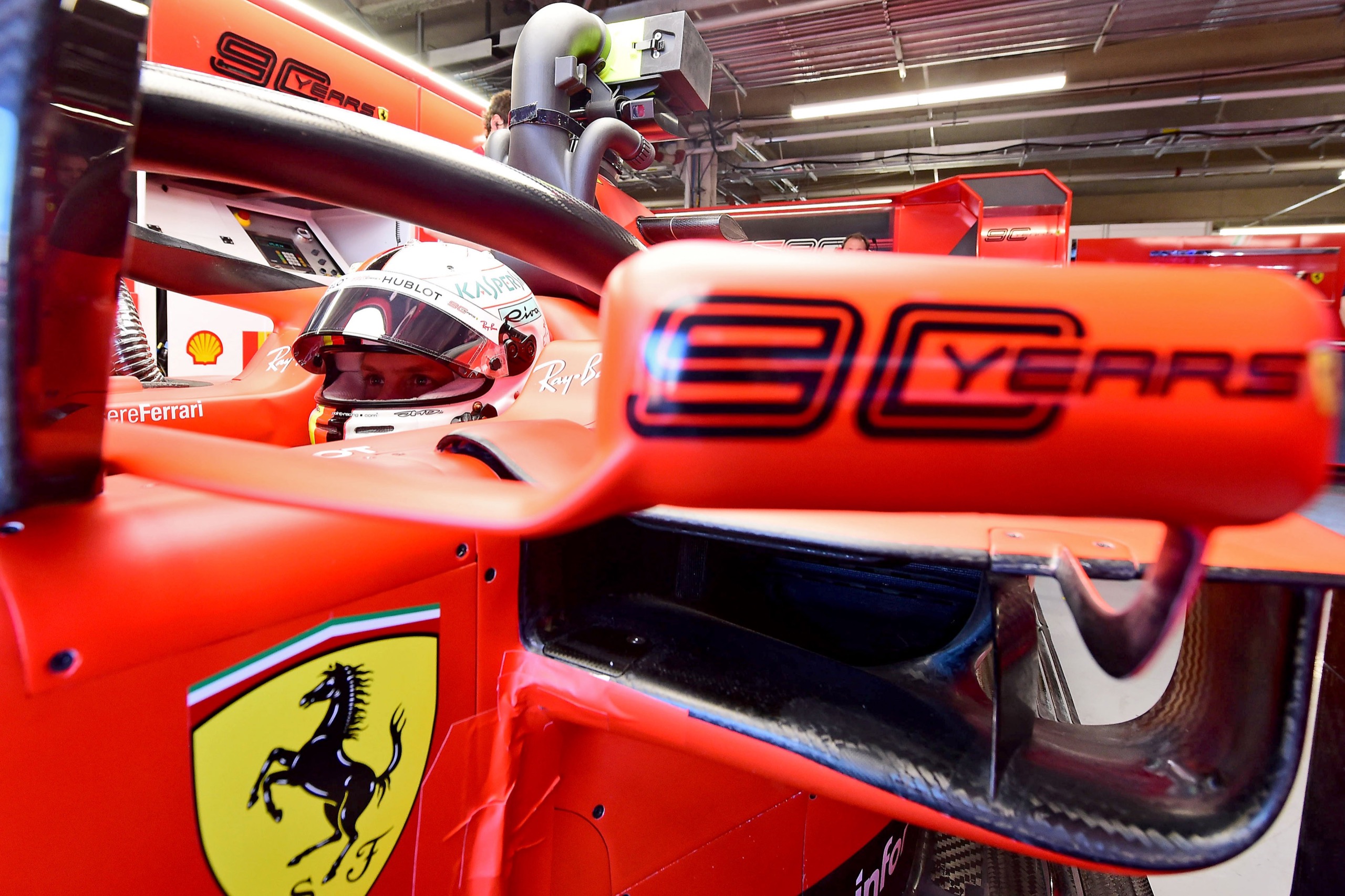
I could go on about the race run up, where Vettel’s Ferrari SF90 took his 56th career pole over the dominant Mercedes’ W10. However, every detail of the Canadian Grand Prix was nullified by an incredibly misguided and short-sided penalty that has made both long-time aficionados and newly interested fans alike announce on global social media that they are finished with F1 as it stands.
What kind of horrible racing incident could have triggered such revulsion? What steward’s decision was vile enough to risk hundreds of thousands of once-fans to walk away from the future of the sport willingly?
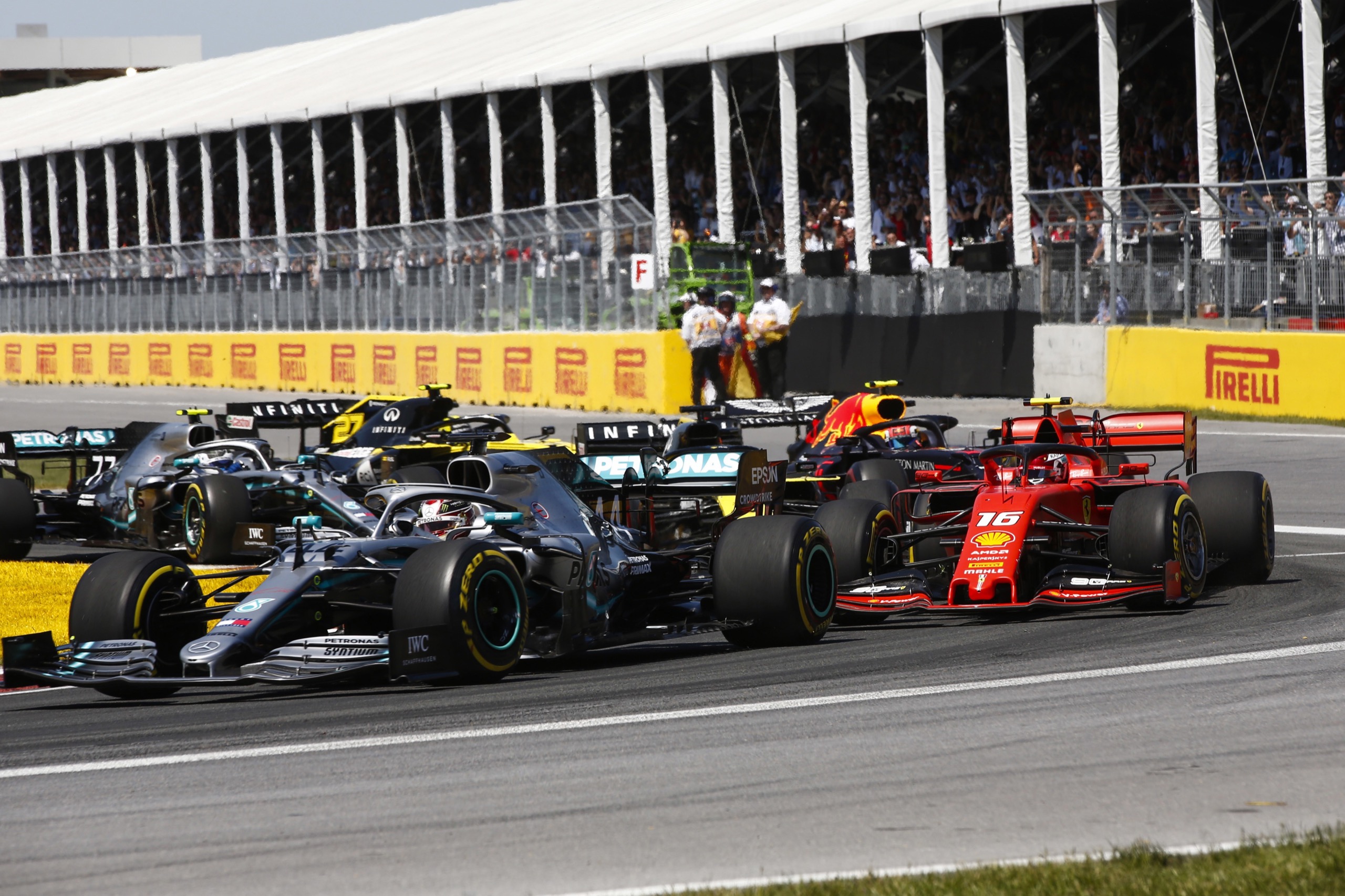
Simply, due to a two-second-long on-track incident, F1 stewards decided that F1 drivers can no longer race each other.
I’ve been a participant of F1 since 1972. I experienced the days of Ickx, Stewart and Peterson – geniuses like Chapman and Murray – heroes like Villeneuve and Jones, and Senna and Prost.
What makes that period “gold” to many F1 “lifers”? During the last laps of the 1978 French Grand Prix, Ferrari’s Gilles Villeneuve and Renault’s Rene Arnoux went at each other hammer and tongs – passing and re-passing and yes, even leaving the actual racing surface once as they fought over second place.
There were no flags, penalties, stewards actions or reprimands. What did happen? Both drivers were hoisted on the shoulders of their crew in celebration of their brilliant will to win and their abilities to take racing to the edge and survive. Their racing duel was the birth of a treasured golden era of F1 that we will never witness again. Why? Because it was lump-in-the-throat-racing.
With the Canadian GP decision, F1 is not racing any longer …… just a flash and chrome show.
The FIA stewards imposed Article 27.3 of F1’s sporting regulations which states: “Should a car leave the track the driver may rejoin, however, this may only be done when it is safe to do so and without gaining any lasting advantage.”
The rule is intended to control a driver reentering the track after a spin or returning to the racing line after traversing designated bollards.
Sebastian Vettel was penalised 5-seconds for the way his Ferrari “rejoined the track” and “forced” Lewis Hamilton to take avoiding action.
Let’s set the scene of the “horrible” offensive racing incident with specific real-world details.
The entire racing incident took less than two seconds.
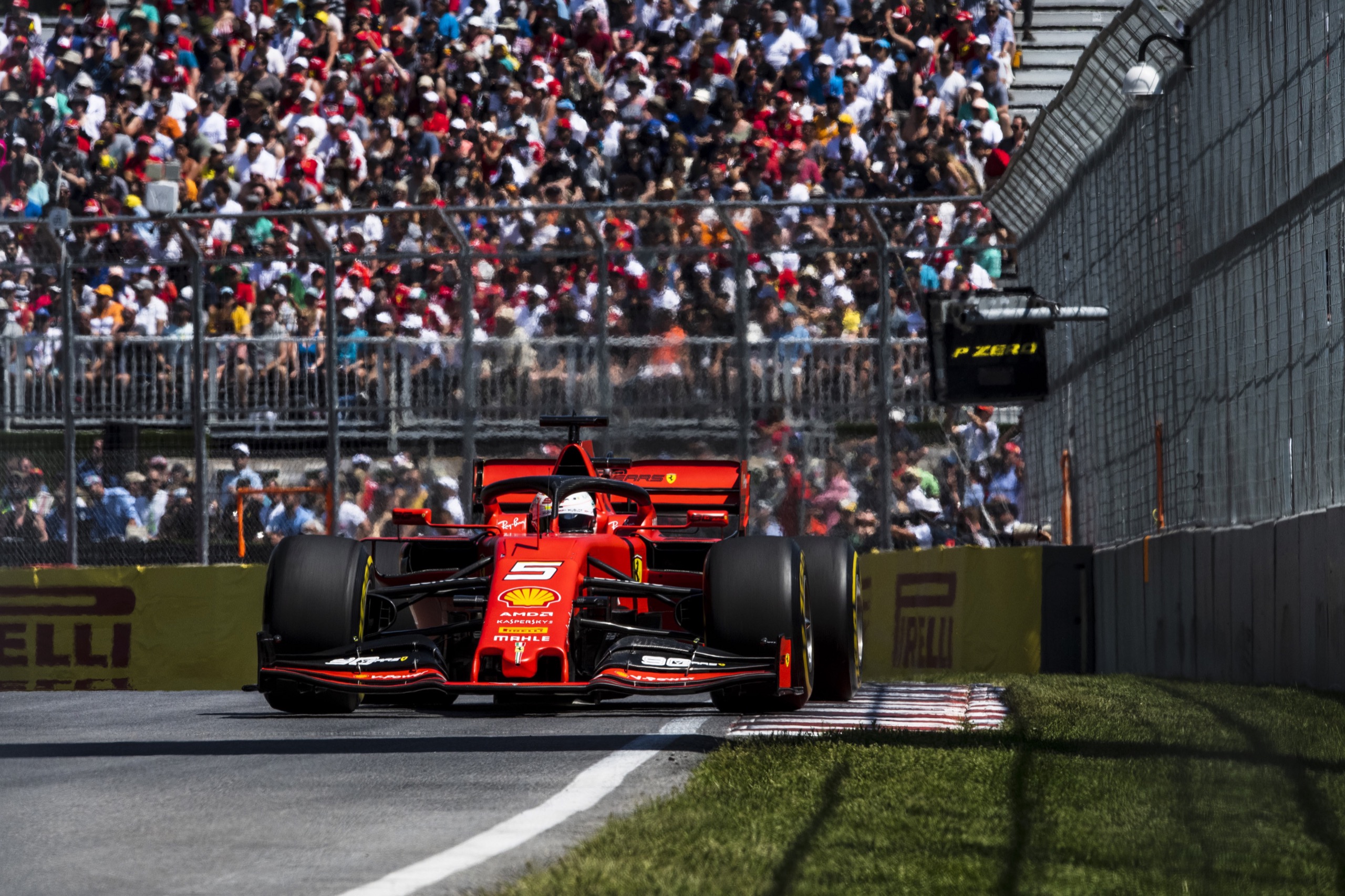
Turning into the Turn 3-4 esses on Lap 49, the rear of Vettel’s Ferrari twitched hard left. Perhaps Vettel misjudged the remaining grip in his fronts, therefore hitting the brakes a bit late, causing his car’s nose to pitch down a bit too much. He then may have added power a bit too quickly, prompting the now unloaded rear to snap sideways.
He knew in an instant that it was impossible to keep his SF90 from rocketing off the track, never mind on the racing line. To prevent an even bigger accident, Vettel counter-steered and opened his arc. His Ferrari immediately was on and then off the grassy patch and onto the racing line, taking perhaps less than a second, followed by a wobbly slide on the racing surface heading for the Turn 4 wall thanks to the Ferrari’s grass-and-dust-embedded racing tyres.
Vettel stabilised his car via the gas pedal and his hands while also adding a bit more lock to feel if his tyres had shed the grass or if they were even usable.
Behind and rapidly closing in, Lewis Hamilton had a choice – should he overtake on the left, where the sliding Ferrari wouldn’t be – or on the right, despite the quickly closing gap between the wall and Vettel’s sliding Ferrari?
Here then, was the moment where Hamilton created an even bigger problem. Quite odd for a driver of his experience, Hamilton went for the diminishing gap that, it was plain to see, was precisely where the unhinged Ferrari was going to end up.
Great drivers quickly learn to go where an out of control vehicle’s trajectory isn’t. Hamilton kept from colliding with the Ferrari by hitting the brakes hard. Had he considered Vettel in control or had he decided that a loud complaint about Vettel’s actions might draw a penalty?
We’ll never know.
Up until now, the dust-up was merely a “racing incident”, the kind that happens throughout a good Grand Prix, as world-class pilots try and yes, sometimes fail to judge passes correctly.
With Hamilton’s anticipated pass spoiled, he was on the radio reporting, “The way (Vettel) rejoined was so dangerous.”
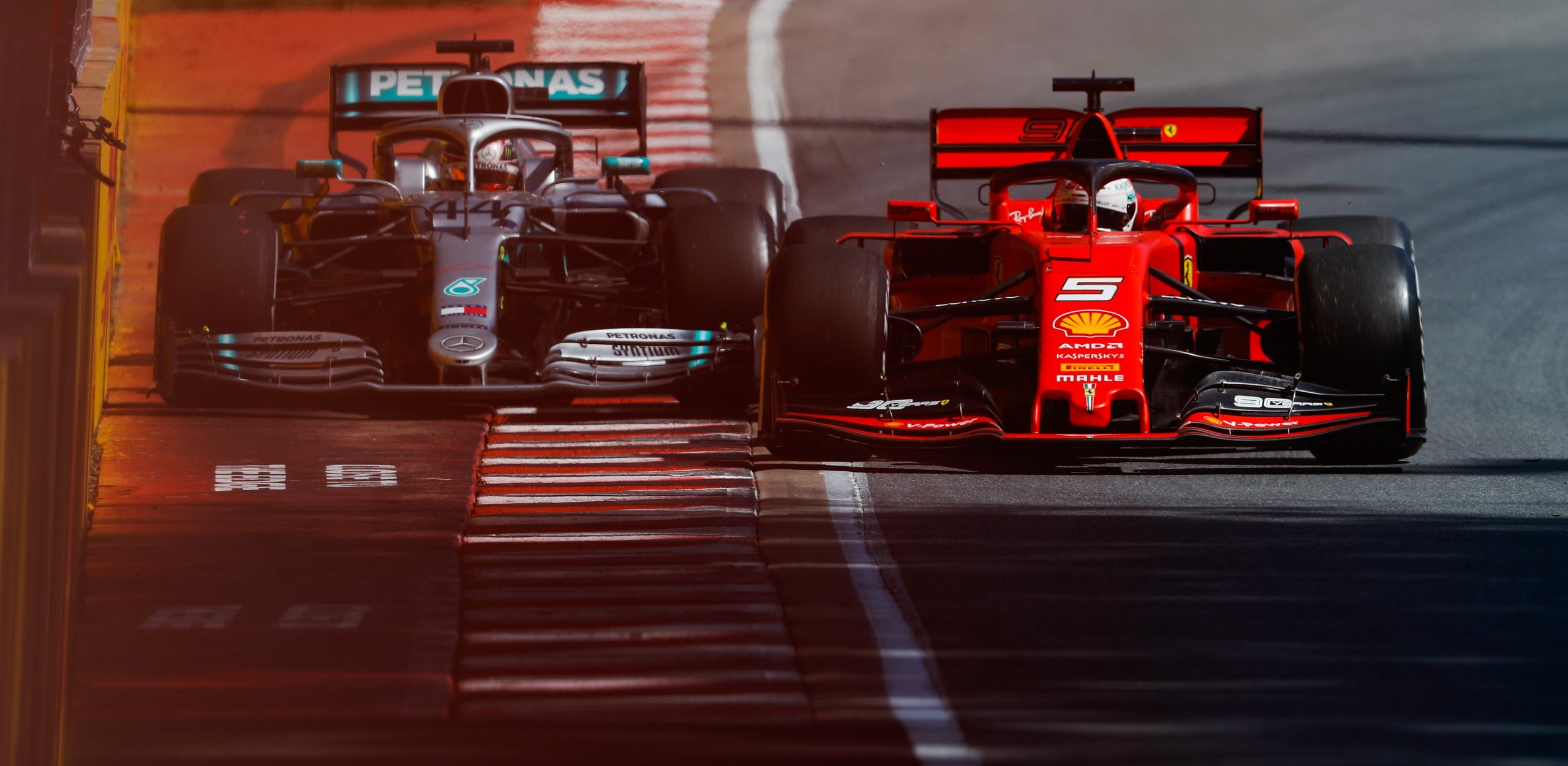
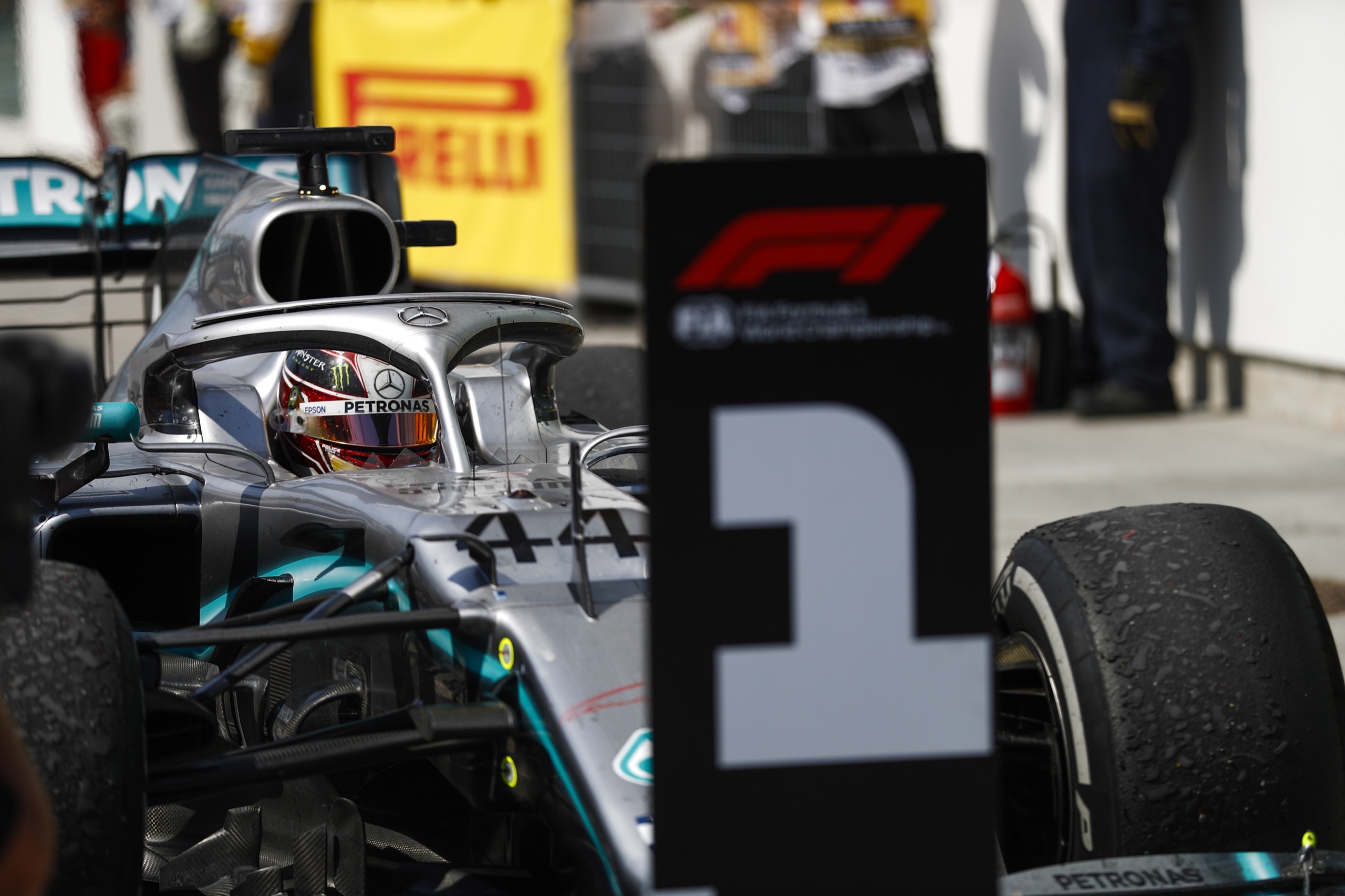
Hamilton knew that the FIA stewards monitor all radio traffic and statements like that cause inquiries, investigations and findings.
Remember, at Vettel’s speed, there was no possibility of slowing (braking with grass covered tyres would have caused a spin collecting Hamilton) – or steering to the left or right (the now slippery grass-embedded tyres on the tarmac lacked grip) – or doing anything else except saving the car from hitting a wall ( again, starting with a temporarily un-steerable race car).
Moments later, the stewards announced they were discussing the Vettel/Hamilton incident. Eight laps later, the ruling was delivered – Vettel would take a five-second time penalty added at the end of the Grand Prix. As Vettel couldn’t leave Hamilton behind, and with Hamilton unable to pass Vettel, the Grand Prix was essentially over -Hamilton guaranteed a sure win if he merely stayed a risk-less close second.
Fans watching via the telecast and in person witnessed a sham finish instead of a brilliant, honest, no-holds-barred fight.
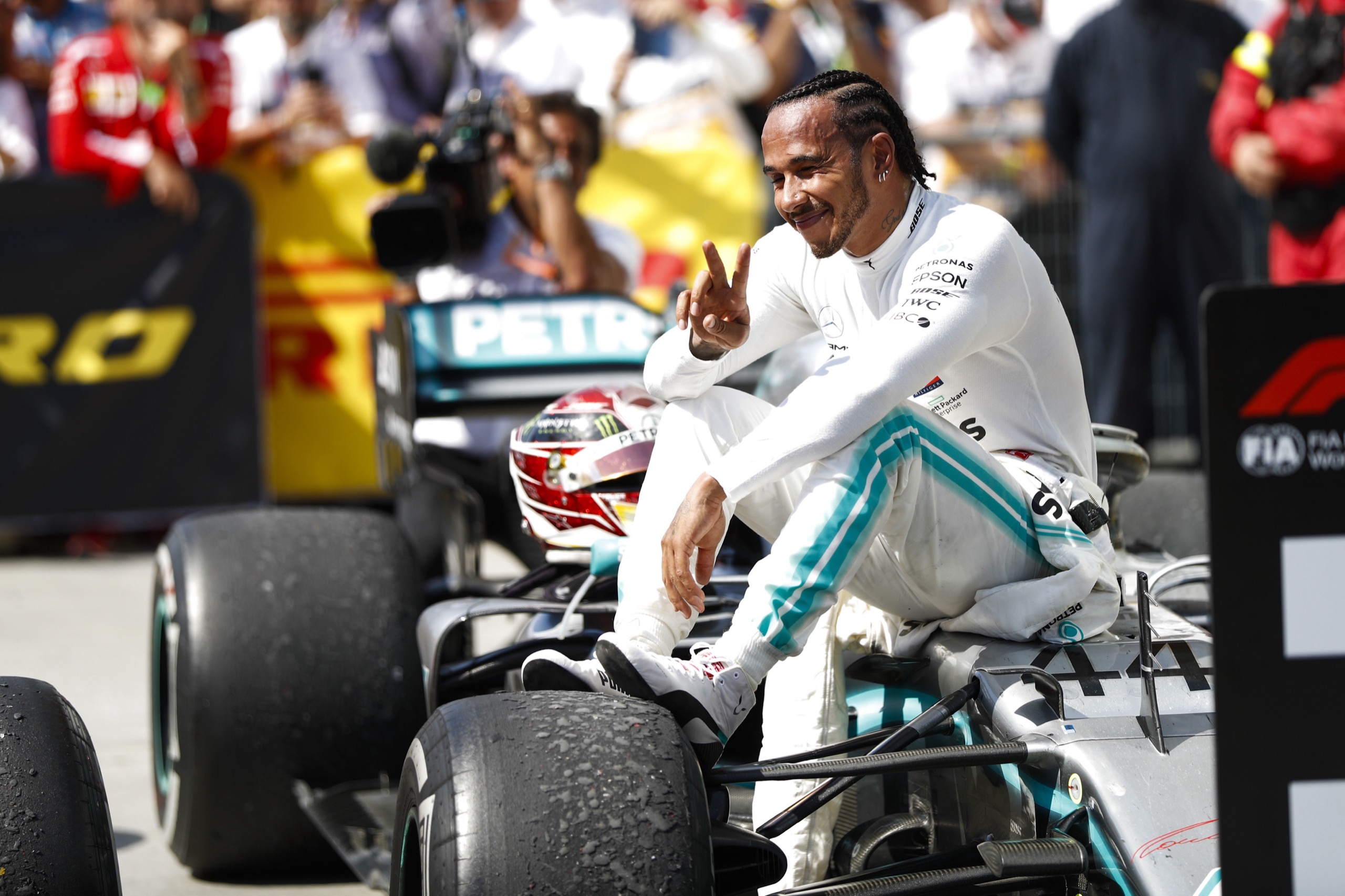
A simple racing incident had been elevated beyond measure by FIA stewards bent on the kind of decision-making that kills racing. They feel compelled to impose every single rule regardless of the facts or appropriateness.
Did Vettel gain an advantage by cutting through the grass?
No. He lost momentum after his Ferrari pitched him toward the wall.
Was Vettel still in front of Hamilton when he rejoined the track, and as such, in a position to defend? Yes.
All the rest is irrelevant. An unnecessary penalty, from both a political and racing point of view, ruined the rest of the Canadian Grand Prix since Hamilton didn’t need to try a pass.
Vettel made a mistake and displayed tremendous skill to regain control. Hamilton deserves applause for avoiding contact after he chose the worst of his two choices in a split second reaction. Both multiple world champions reacted as expected in a racing incident. Now, no harm-no foul – let’s get on with racing to the finish.
What’s the point of F1 pushing the limits and competing as the ultimate racing class if you get penalized for the slightest mistake?
Since the incident, both F1 and IndyCar champions Mario Andretti and Nigel Mansell have stated this ruling was ill-considered, and those two seconds produced nothing but a minor racing incident.
Who else would know better?